|
1. “Open
Reconstruction” in the Aftermath of the Great East Japan Earthquake
2.
The MDGs Follow-up Meeting
3.
The 20th Japan-EU Summit
4.
G8 Deauville Summit
5.
2011 OECD Ministerial Council Meeting
6.
The Fourth Japan-China-ROK Trilateral Summit Meeting
7.
The Third TICAD Ministerial Follow-Up Meeting
8.
The Second Foreign Ministers’ Meeting on Nuclear Disarmament and
Non-Proliferation
|
|
|
JICC
Newsletter
No.4, June 2011 |
1. “Open
Reconstruction” in the Aftermath of the Great East Japan Earthquake
Working with Heart-Warming Support Towards a Safe and Secure Japan
that Coexists in Harmony with the World
|
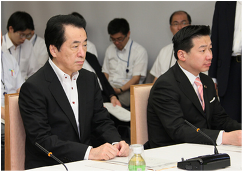 |
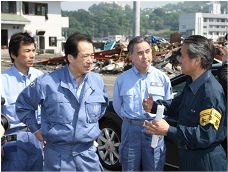 |
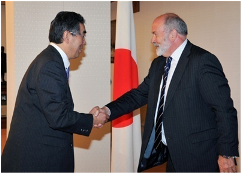 |
|
Prime Minister
Kan attending the Conference of Reconstruction Ideas
©Cabinet Public Relations Office |
Prime Minister
Kan inspection the condition of debris etc. (Iwate
Prefecture)
©Cabinet Public Relations Office |
Visit to Foreign Minister
Matsumoto by the Study Mission of IAEA |
|
|
|
|
|
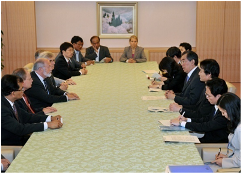 |
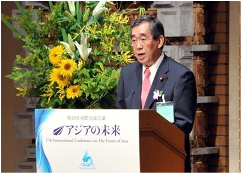 |
|
|
Visit to Foreign Minister
Matsumoto by the Study Mission of IAEA |
Lecture by Foreign Minister
Matsumoto at the 17th International Exchange Conference
"Future of Asia" |
|
“Thank You Again”
Please
accept once again our heartfelt gratitude for your country’s
sympathy and support after the Great East Japan Earthquake. The
Government of Japan continues to work with the residents of the
affected region and the people of Japan, expending all efforts to
overcome the present difficulties and secure safety for the disaster
victims, including foreigners, and an early recovery for the region.
Re-establishing
a Safe and Secure Japan
Japan
is already on a steady, step-by-step path towards recovering safety
in relation to the accident at Tokyo Electric Power Company’s (TEPCO)
Fukushima Dai-ichi Nuclear Power Station. Except in areas
surrounding the power station, radiation levels are now at normal
levels in Tokyo and elsewhere, posing no health hazards. This
concurs with the Preliminary Summary of the report issued on June 1
by the International Atomic Energy Agency’s (IAEA) fact-finding
mission that was sent to Japan from May 24 to June 2. The
preliminary summary states: “To date, no health effects have been
reported in any person as a result of radiation exposure from the
nuclear accident.” Mobilizing knowledge and technology from around
the world, work is underway to bring the situation under control. We
are gradually regaining a safe and secure Japan.
At the
G8 Summit in Deauville in May, Prime Minister Naoto Kan stated that
it is Japan’s responsibility to share the experiences and lessons
learned from the accident in order to realize the highest levels of
nuclear safety worldwide. On June 7, Japan issued the Report of the
Japanese Government to the IAEA Ministerial Conference on Nuclear
Safety. A thorough investigation of the accident is now underway
with the launch of the Investigation Committee on the accidents.
Japan will continue to share the lessons learned from the accident
with the international community with maximum transparency and make
a leading contribution to international discussions on nuclear
safety.
Pursuing “Open Reconstruction” through Three Aspects
of Symbiosis
We will
pursue a future-oriented and “open reconstruction” program, hand in
hand with the international community, so that we will be able to
reciprocate the goodwill that has been extended to us. Pictures of
Japanese people helping each other and trying hard to recover their
lives have drawn the attention of the world. This can be interpreted
as an expression of the underlying spirit of symbiosis, or
interaction based on mutual dependence and mutual benefit, which the
Japanese have long embraced. People evolve through competition but
they are able to sustain themselves through symbiosis. Symbiosis may
be the most crucial principle for the coming generation. One aspect
of symbiosis is “coexistence among people.” The philosophy of human
security, of which Japan is a leading advocate in the international
community, is a reflection of the spirit of symbiosis among people
which Japanese people have fostered. The second aspect of symbiosis
is “coexistence among nations.” Japan will help foster harmonious
coexistence among nations by promoting cooperation with the
international community in the areas of diplomacy, security, and the
economy. This is part of the mission of Japan’s diplomacy, which has
contributed to the achievement of Japan’s peace and prosperity today
through international cooperation. Finally, in overcoming natural
disasters, such as has occurred on March 11, “symbiosis between
people and nature” is vital. Absorbing the lessons of the earthquake
and the nuclear accident, Japan intends to lead international
discussions on improving nuclear safety and environmental policy as
well as on responding to large-scale natural disasters.
To
conclude, we would like to emphasize that Japan remains “open for
business and travel.” We have already received tremendous assistance
from around the world. Were the international community to support
us even more, however, we would be grateful if it would understand
that the most helpful support for us would be to promote business
with Japan and encourage visiting Japan for pleasure or study just
as before, or more so.
|
